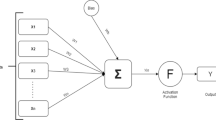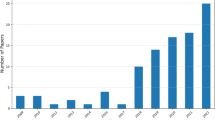Abstract
Wind energy is one of the potential renewable energy sources being exploited around the globe today. Accurate prediction of wind speed is mandatory for precise estimation of wind power at a site. In this study, hybrid machine learning models have been deployed for short-term wind speed prediction. The twin support vector regression (TSVR), primal least squares twin support vector regression (PLSTSVR), iterative Lagrangian twin parametric insensitive support vector regression (ILTPISVR), extreme learning machine (ELM), random vector functional link (RVFL), and large-margin distribution machine-based regression (LDMR) models have been adopted in predicting the short-term wind speed collected from five stations named as Chennai, Coimbatore, Madurai, Salem, and Tirunelveli in Tamil Nadu, India. Further to check the applicability of the models, the performance of the models was compared based on various performance measures like RMSE, MAPE, SMAPE, MASE, SSE/SST, SSR/SST, and R2. The results suggest that LDMR outperforms other models in terms of its prediction accuracy and ELM is computationally faster compared to other models.











Similar content being viewed by others
Availability of data and materials
Not applicable.
References
Balasundaram S, Gupta D (2014) On implicit Lagrangian twin support vector regression by Newton method. Int J Comput Intel Syst 7(1):50–64
Balasundaram S, Tanveer M (2012) On Lagrangian twin support vector regression. Neural Comput & Applic 22:257–267
Cadenas E, Rivera W (2010) Wind speed forecasting in three different regions of Mexico, using a hybrid ARIMA–ANN model. Renew Energy 35(12):2732–2738
Dhiman HS, Deb D, Guerrero JM (2019) Hybrid machine intelligent SVR invariants for wind forecasting and ramp events. Renew Sust Energ Rev 108:369–379
Fu C, Li GQ, Lin KP, Zhang HJ (2019) Short-term wind power prediction based on improved chicken algorithm optimisation support vector machine. Sustainability 11:512
Gupta D, Acharjee K, Richhariya B (2019) Lagrangian twin parametric insensitive support vector regression (LTPISVR). Neural Comput & Applic 32:5989–6007. https://doi.org/10.1007/s00521-019-04084-1
Houssein EH (2019) Particle swarm optimisation enhanced twin support vector regression for wind speed forecasting. J Intell Syst 28(5):905–914
Huang G-B, Zhu Q-Y, Siew C-K (2004) Extreme learning machine: a new learning scheme of feedforward neural networks, IEEE International Joint Conference on Neural Networks 2:985–990. https://doi.org/10.1109/IJCNN.2004.1380068
Huang H, Ding S, Shi Z (2013) Primal least squares twin support vector regression. J Zhejiang Univ Sci C 14:722–732
Hur S-h (2021) Short-term wind speed prediction using extended Kalman filter and machine learning. Energy Rep 7:1046–1054
Jayadeva, Khemchandani R, Chandra S (2007) Twin support vector machines for pattern classification. IEEE Trans Pat Anal Machine Intell 9(5):905–910
Kumar MA, Gopal M (2009) Least squares twin support vector machines for pattern classification. Expert Syst Appl. 36(4):7535–7543
Li H, Wang J, Lu H, Guo Z (2018) Research and application of a combined model based on variable weight for short term wind speed forecasting. Renew Energy 116:669–684
Liu D, Niu D, Wang H, Fan L (2014) Short-term wind speed forecasting using wavelet transform and support vector machines optimized by genetic algorithm. Renew Energy 62:592–597
Malik A, Tikhamarine Y, Gamane DS, Kisi O, Pham QB (2020) Support vector regression optimized by meta-heuristic algorithms for daily streamflow prediction. Stoch Env Res Risk A 34:1755–1773
Malik A, Tikhamarine Y, Sammen SS, Abba SI, Shahid S (2021a) Prediction of meteorological drought by using hybrid support vector regression optimized with HHO versus PSO algorithms. Environ Sci Pollut Res. https://doi.org/10.1007/s11356-021-13445-0
Malik A, Tikhamarine Y, Gamane DS, Rai P, Sammen SS, Kisi O (2021b) Support vector regression integrated with novel meta-heuristic algorithms for meteorological drought prediction. Meteorog Atmos Phys 133:891–909. https://doi.org/10.1007/s00703-021-00787-0
Mangasarian OL (1969) Nonlinear programming. SIAM Philadelphia, PA
Mi X, Liu H, Li Y (2017) Wind speed forecasting method using wavelet, extreme learning machine and outlier correction algorithm. Energy Convers Manag 151:709–722
Mohammadi K, Shamshirband S, Tong CW, Arif M, Petrovic SC (2015) A new hybrid support vector machine-wavelet transform approach for estimation of horizontal global solar radiation. Energy Convers Manag 92:162–171
Natarajan N, Sudheer C (2020) Groundwater level forecasting using soft computing techniques. Neural Comput & Applic 32:7691–7708
Olatomiwa L, Mekhilef S, Shamshirband S, Mohammadi K, Petrovic D, Sudheer C (2015) A support vector machine-firefly algorithm-based model for global solar radiation prediction. Sol Energy 115:632–644
Pao YH, Phillips SM, Sobajic DJ (1992) Neural-net computing and the intelligent control of systems. Int J Control 56(2):263–289
Pao YH, Park GH, Sobajic D (1994) Learning and generalization characteristics of the random vector functional-link net. Neurocomputing 6(2):163–180
Peng X (2010) TSVR: An efficient twin support vector machine for regression. Neural Netw 23(3):365–372
Peng X (2012) Efficient twin parametric insensitive support vector regression model. Neurocomputing 79(1):26–38
Rastogi R, Anand P, Chandra S (2018) Large-margin distribution machine-based regression. Neural Comput & Applic 32:3633–3648
Rehamnia I, Benlaoukli B, Jamei M, Karbasi M, Malik A (2021) Simulation of seepage flow through embankment dam by using a novel extended Kalman filter based neural network paradigm: Case study of Fontaine Gazelles Dam, Algeria. Measurement 176:109219
Ruiz-Aguilar JJ, Turias I, Gonzalez-Enrique J, Urda D, Elizondo D (2021) A permutation entropy-based EMD-ANN forecasting ensemble approach for wind speed prediction. Neural Comput & Applic 33:2369–2391
Samadianfard S, Hashemi S, Kargar K, Izadyar M, Mostafaeipour A, Mosavi A, Nabipour N, Shamshirband S (2020) Wind speed prediction using a hybrid model of the multi-layer perceptron and whale optimisation algorithm. Energy Rep 6:1147–1159
Shamshirband S, Mohammadi K, Tong CW, Petrovic D, Porcu E, Mostafaeipour A, Sudheer C, Sedaghat A (2016) Application of extreme learning machine for estimation of wind speed distribution. Clim Dyn 46:1893–1907
Shao Y, Zhang CH, Yang ZM, Jing L, Deng NY (2012) An ɛ-twin support vector regression. Neural Comput & Applic 23(1):175–185
Tikhamarine Y, Malik A, Kumar A, Gamane DS, Kisi O (2019) Estimation of monthly reference evapotranspiration using novel hybrid machine learning approaches. Hydrol Sci J 64(15):1824–1842
Tikhamarine Y, Malik A, Pandey K, Sammen SS, Gamane DS, Heddam S, Kisi O (2020a) Monthly evapotranspiration estimation using optimal climatic parameters: efficacy of hybrid support vector regression integrated with whale optimization algorithm. Environ Monit Assess 192:696
Tikhamarine Y, Malik A, Gamane DS, Kisi O (2020b) Artificial intelligence models versus empirical equations for modeling monthly reference evapotranspiration. Environ Sci Pollut Res 27:30001–30019
Trajkovic S, Gocic M (2021) Evaluation of three wind speed approaches in temperature-based ET0 equations: a case study in Serbia. Arab J Sci Eng 14:35. https://doi.org/10.1007/s12517-020-06331-5
Wang J, Zhou Q, Jiang H, Hou R (2015) Short-term wind speed forecasting using support vector regression optimised by cuckoo optimisation algorithm. Math Probl Eng 619178:1–13
Wang Y, Zhou X, Liang L, Zhang M, Zhang Q, Niu Z (2018) Short-term wind speed forecast based on least squares support vector machine. J Info Proces Syst 14(6):1385–1397
Zhang T, Zhou ZH (2014) Large margin distribution machine. In Proceedings of the 20th ACM SIGKDD international conference on Knowledge iscovery and data mining. 313–322. https://doi.org/10.1145/2623330.2623710
Zhang C, Wei H, Zhao X, Liu T, Zhang K (2016) A Gaussian process regression based hybrid approach for short-term wind speed prediction. Energy Convers Manag 126:1084–1092
Author information
Authors and Affiliations
Contributions
DG contributed in performing the analysis and preparation of tables; NN contributed in the collection of literature and in writing the introduction; MB contributed in writing and reviewing the manuscript. All the authors read and approved the final manuscript.
Corresponding author
Ethics declarations
Ethics approval and consent to participate
Not applicable.
Consent for publication
Not applicable.
Competing interests
The authors declare no competing interests.
Additional information
Responsible Editor: Marcus Schulz
Publisher’s note
Springer Nature remains neutral with regard to jurisdictional claims in published maps and institutional affiliations.
Rights and permissions
About this article
Cite this article
Gupta, D., Natarajan, N. & Berlin, M. Short-term wind speed prediction using hybrid machine learning techniques. Environ Sci Pollut Res 29, 50909–50927 (2022). https://doi.org/10.1007/s11356-021-15221-6
Received:
Accepted:
Published:
Issue Date:
DOI: https://doi.org/10.1007/s11356-021-15221-6




